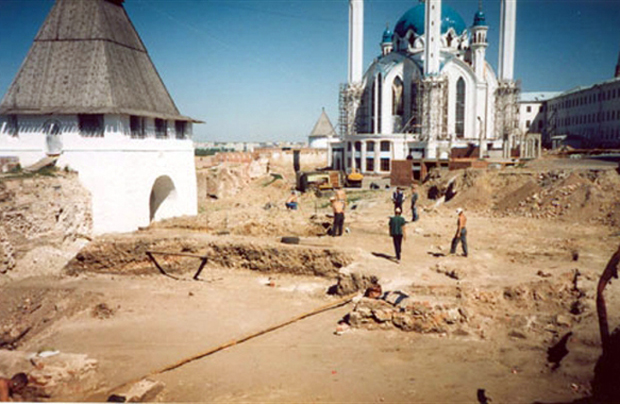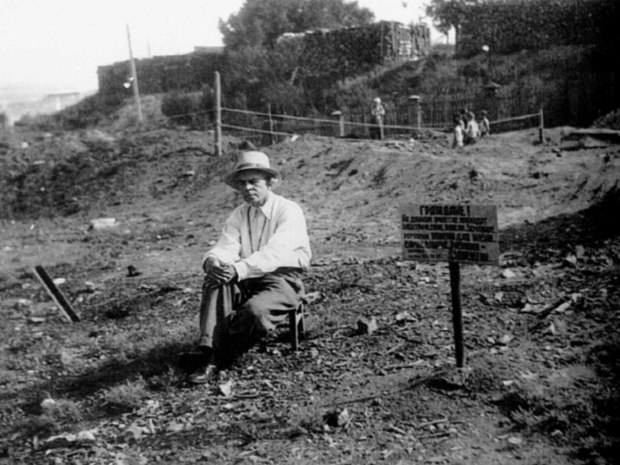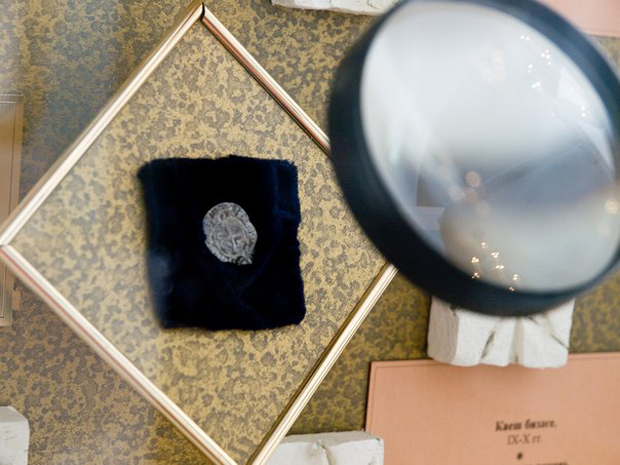‘1000 years for Kazan – it is a very ancient age. Why make it more ancient?’
One of the fathers of the Kazan millennium has joined the discussion of a new dating of the age of the Tatarstan capital
The recent statement of the famous scientist of Tatarstan, the head of the Department of Lexicology and Dialectology of the Language, Literature and Art Institute named after Ibragimov of the Academy of Sciences of Tatarstan Mirfatykh Zakiev that Kazan appeared before the Bulgars, and its age is 2 700 years, sparked the heated debate in social networks. Reanoe Vremya turned to the Deputy of the Institute of Archaeology named after Khalikov of the Tatarstan Academy of Sciences Fayaz Khuzin in order to find out whether such theory has a right to exist, whether it is possible to justify the existence of such ancient cities as Kazanka-1 and Kazanka-2, and whether it is possible that the known Czech coin could be added from outside during excavations in the capital of Tatarstan.
'There we have found a settlement where people lived 10-12 thousand years ago, but this does not mean that Kazan already existed at this time'
Some scientists claim that in our region the city of Kazan appeared before the Bulgars, BC. And a settlement is about 3,000 years old. In your opinion, does this theory have a right to exist?
1000 years – it is a very ancient age, great age. Why make it more ancient? Many people are against the millennial age – they say that the town was founded in the Golden Horde times or even in the period of the Kazan khanate and immediately as the capital. We should be content and happy that Kazan is 1000 years old. Generally, it has no ground. First, there must be archaeology – we must find things in Kazan of that time, proving that it was a city.
If to speak about it as a settlement, the most ancient one is located in the courtyard of the main building of the University, Kremlevskaya Str., 18. There we have found a settlement where people lived 10-12 thousand years ago, but this does not mean that Kazan already existed at this time.

'It is with this settlement on the Kremlin hill we begin the history of modern Kazan. And all previous – it is only episodes.' Photo: tatpressa.ru
On the territory of Kazan, there are about 60 archaeological monuments. This is just the start of an initial exploration of the future territory of Kazan. The first people came, stone age, very beautiful and pleasant place. That is why people lived here in the stone age and the bronze age and the early iron age, and eventually the Bulgars who already have statehood came here and put a fortress on the place of the world trade center. It is with this settlement on the Kremlin hill we begin the history of modern Kazan. And all previous – it is only episodes.
Let's take another settlement at Nizhny Kaban — Boriskovo. The burial ground Boriskinskiy or Boriskovsky existed there, which was excavated in the late 19th century. It is the burial ground of the 9 th-11th centuries – virtually the time of the origin of the city. This burial ground was abandoned by ancient Mari people, which means they lived here. The Bulgars came, the district had already been developed – Mari people lived here but they were more backward than the Bulgars in socio-economic terms, the Bulgars then put the fortress, from which Kazan began. Almost throughout the vast territory of modern Kazan, different peoples lived there because the place was comfortable. But it is with Bulgarian fortress starts the continuous life of the city.
The forgotten settlement and the Czech coin
Could this theory justify the existence of such settlements as Kazanka-1 and Kazanka-2?
Indeed, there are two towns on the Novatorov street, not far from Gorky Park – it is Kazanka-1 and Kazanka-2. These settlements were founded, as we think, by Finno-Ugric peoples, most likely, the ancestors of the Mari people somewhere in the second and first millennium BC. I will note that they have no relation to the modern Kazan. According to the method of establishing dates of the emergence of cities, the most ancient monument associated with the modern city is one from which begins the continuous development or continuous life on this territory.

In the late 1940s, Nikolai F. Kalinin (on the photo), the founder of the Kazan school of archaeology, conducted excavations there. In general, he found pottery of the bronze age there – in Kazanka-2'. Photo: art16.ru
At the end of the bronze age (second Millennium BC) and early iron age people lived, but then there was a large gap in the development of the city. That is, with all desire we can not start the history of our city from these two monuments. Cities arise only under conditions of statehood. Where is a state there is a city, no state — no cities. The state of Volga Bulgaria arises only in the late 9th and early 10th centuries – so before that time in the truest sense the cities did not exist.
Kazan – a Bulgar city, the city of the ancestors of the Kazan Tatars. The settlements Kazanka-1 and Kazanka-2 are not associated with them. They appeared, existed and disappeared, and then they forgot about the settlements.
I would like to touch on the subject of determining the age of the modern Kazan: could you explain why it cannot be linked only with the Czech coin and comment on the rumors that this coin could be put outside or be fake?

'This coin is of 930 year, but we date it in 1005 –the difference at 75 years, almost a century. That is, our dating is based not on coin but the other finds.' Photo: kazan-kremlin.ru
The coin became sensational because it is the only one in the world. It could not be put outside because even in the Czech Republic there was no such coin. There have been some rumors lately that in the Czech Republic there was found the same coin – thank God if it is true, but I personally have not read the scientific publications. How can we put the unknown coin? So I, as the head of the expedition, must be familiar with this man, who was going to put a coin, to agree. It's a real gamble. None of the archaeologists would agree for such forgery because we have plenty of our archaeological finds.
This coin is of 930 year, but we date it in 1005 – the difference of 75 years, almost a century. That is, our dating is based not on coin but the other finds. The coin is just an indicator of trade relations of Volga Bulgaria (the future citizens of Kazan, we can say) with Western Europe. Its value is just in that. Other finds quite objectively could confirm the time of occurrence of Kazan without this coin. There was also another coin, other things that have been well studied.